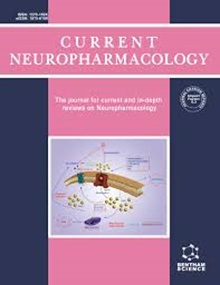作为颞叶癫痫诊断和耐药性预测因子的血清微RNA:初步研究
IF 4.8
2区 医学
Q1 NEUROSCIENCES
引用次数: 0
摘要
目的:颞叶癫痫(TLE)是最常见的难治性局灶性癫痫:颞叶癫痫(TLE)是难治性局灶性癫痫中最常见的一种,目前临床诊断主要依据脑电图、临床神经病史和神经影像学检查结果。方法:尽管 TLE 的致病机制涉及基因表达调控缺陷,但迄今为止还没有基于血液的 TLE 分子生物标志物来支持临床诊断。微RNA(miRNA)已成为基因表达的重要转录后调控因子。结果:最近的研究表明,检测体液中的 miRNAs 是可行的;循环 miRNAs 已成为癫痫的潜在临床生物标志物,但 TLE 的 miRNA 图谱仍有待研究。在这里,我们通过 RT-qPCR 分析了 52 名 TLE 患者和 40 名年龄与性别匹配的供体对照者血清中 8 种循环 miRNA 的诊断潜力。研究结论我们发现,与对照组相比,miR-34a-5p、-106b-5p、-130a-3p、-146a-5p 和 -19a-3p在TLE中的表达量不同,这表明它们在诊断中的作用不同。此外,我们还发现,miR-34a-5p、-106b-5p、-146a-5p 和 miR-451a 可成为预后生物标志物,在耐药和对药物有反应的 TLE 受试者之间有不同的表达。因此,血清miRNA是诊断和预测TLE耐药性的分子。本文章由计算机程序翻译,如有差异,请以英文原文为准。
Serum MicroRNAs as Predictors of Diagnosis and Drug-resistance in Temporal Lobe Epilepsy: A Preliminary Study
Objective: Temporal lobe epilepsy (TLE) is the most common form of refractory focal epilepsy, and the current clinical diagnosis is based on EEG, clinical neurological history and neuroimaging findings. Methods: So far, there are no blood-based molecular biomarkers of TLE to support clinical diagnosis, despite the pathogenic mechanisms underlying TLE involving defects in the regulation of gene expression. MicroRNAs (miRNAs) have emerged as important post-transcriptional regulators of gene expression. Results: Recent studies show the feasibility of detecting miRNAs in body fluids; circulating miRNAs have emerged as potential clinical biomarkers in epilepsy, although the TLE miRNA profile needs to be addressed. Here, we analysed the diagnostic potential of 8 circulating miRNAs in sera of 52 TLE patients and 40 age- and sex-matched donor controls by RT-qPCR analyses. Conclusion: We found that miR-34a-5p, -106b-5p, -130a-3p, -146a-5p, and -19a-3p are differently expressed in TLE compared to control subjects, suggesting a diagnostic role. Furthermore, we found that miR-34a-5p, -106b-5p, -146a-5p and miR-451a could become prognostic biomarkers, being differentially expressed between drug-resistant and drug-responsive TLE subjects. Therefore, serum miRNAs are diagnostic and drug-resistance predictive molecules of TLE.
求助全文
通过发布文献求助,成功后即可免费获取论文全文。
去求助
来源期刊

Current Neuropharmacology
医学-神经科学
CiteScore
8.70
自引率
1.90%
发文量
369
审稿时长
>12 weeks
期刊介绍:
Current Neuropharmacology aims to provide current, comprehensive/mini reviews and guest edited issues of all areas of neuropharmacology and related matters of neuroscience. The reviews cover the fields of molecular, cellular, and systems/behavioural aspects of neuropharmacology and neuroscience.
The journal serves as a comprehensive, multidisciplinary expert forum for neuropharmacologists and neuroscientists.
 求助内容:
求助内容: 应助结果提醒方式:
应助结果提醒方式:


